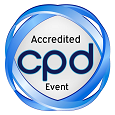
Lu Xing
West China Hospital, China
Title: Comparative study on readiness for hospital discharge of abdominal surgery patients’ self-appraisal, nurses’ evaluation and family members’ self-appraisal
Biography
Biography: Lu Xing
Abstract
Objective: To discuss the current situation of abdominal surgery patients’ readiness for hospital discharge, compare the discrepancy between patients’ self-appraisal, nurses’ evaluation and family members’ self-appraisal, and provide evidence to improve patients’ quality of life after discharge. Methods: A convenience sample of 239 patients, 74 nurses and 239 family members were selected according to the criterions. Four instruments were used to collect data: General Data Scale, the Chinese version of the Readiness for Hospital Discharge Scale (RHDS-C), the Readiness for Hospital Discharge Scale of Family, the Registered Nurses’ Perception of Readiness for Hospital Discharge Scale (RNRHDS). Results: The score of RHDS-C was (159.94±37.61), the scores of subscales in descending order were: expected support, coping ability, knowledge and personal status. Nurses’ evaluation score and family members’ self-appraisal score of readiness for hospital discharge were (167.93±26.71) and (166.49±36.17) respectively, they both had statistically significant difference with patients’ self-appraisal (t=-3.192, P=0.002, t=-3.444, P=0.001). Conclusion: Abdominal surgery patients’ readiness for hospital discharge was above average, nurses overestimated patients’ readiness for hospital discharge, and readiness for hospital discharge of family members’ and patients’ self-appraisal were different. Therefore, medical workers should add patients’ self-assessment to the evaluation system of readiness for hospital discharge to evaluate more objectively and accurately, and actively carry out patient-centered discharge planning services. In addition, medical workers should pay attention to the family members’ readiness for hospital discharge at the same time and give them individualized discharge guidance. Thus it can improve the patients’ rehabilitation effectiveness and quality of life after discharge ultimately.

